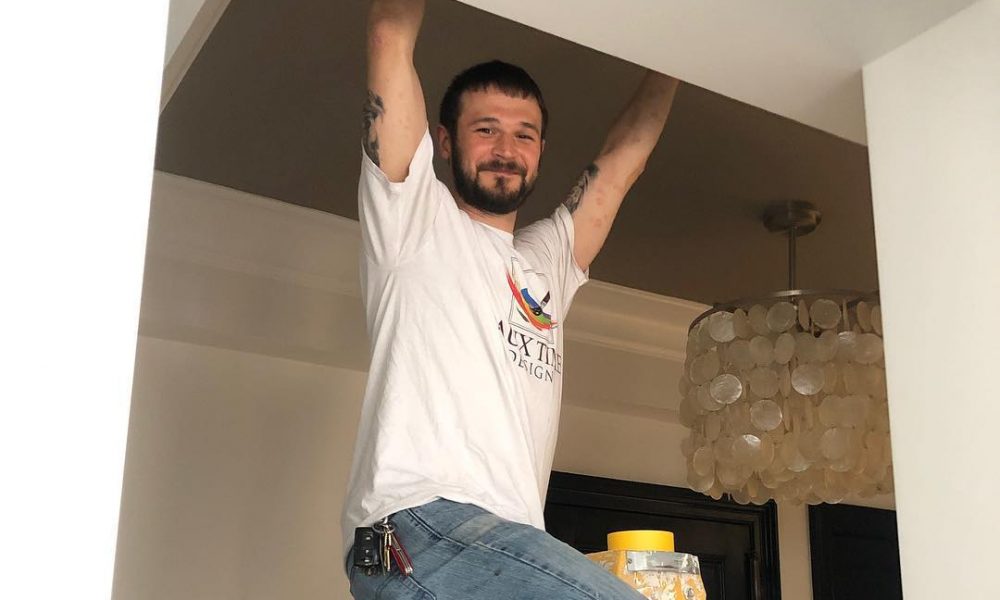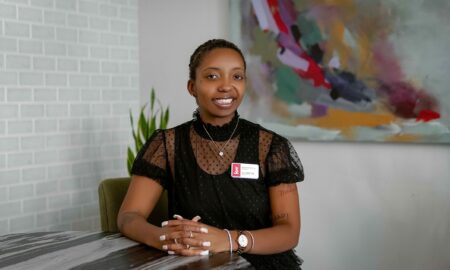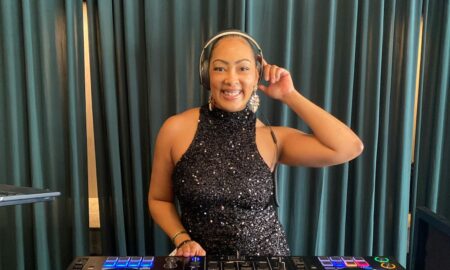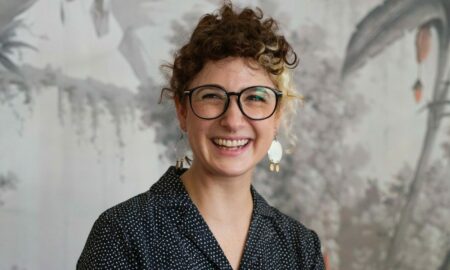

Today we’d like to introduce you to James Cottage.
Every artist has a unique story. Can you briefly walk us through yours?
I have not given up on the dream I had when I was young, to write and illustrate my own fantasy novel. It was with that aim that I graduated from RIT where I studied Illustration and Creative Writing. But upon graduating my first artistic job was to be a Store Graphic Artist at Whole Foods Market, where I worked for about 7 years. I acquired many skills through that job, as well as developed an even greater appreciation for the merging of illustrations with lettering/calligraphy.
I had been working with two friends (Bryant Pulley and Katelyn Amacker) to put out a webcomic called After (after-comic.com). This was the first time I had seen my lettering used in an art form that was not commercial. It was by that experience that I came to have a clear goal: to digitally design a fantasy novel that I am writing, so that it resembles a medieval illuminated manuscript. It is toward that end that I hope my other projects will help to aid me in doing a better job.
These other projects have mostly come after my time as a Store Graphic Artist. I have collaborated with Vincent F.A. Golphin, my Creative Writing professor at RIT, on his children’s book (Grandma Found a Gecko). He suggested me to Kellianne Sweeney, and I have illustrated her children’s alphabet book as well (Eggsplats and Mudpie Rainbows and Other Stuff Kids Love). I also illustrated for an eBook by Rob Bajor (Whale Fall) who, in turn, recommended me to his friend Steve Nordmark, whose story (Alcon Saves Canistra) was a collaboration between he and his son, which I illustrated. I was also involved in an internship for a non-profit called The Adventures of a Rogue Swan, designing and creating bilingual children’s books to benefit immigrant students (Desdamona Presents: Raymonda, Desdamona Presents: Cinderella).
Many of my freelance projects have involved creating storefront signage or murals. I very eagerly took to muralist projects where the designs were meant to draw from literary inspiration, and occasionally I have had the opportunity to let imagery from my own story play a part. It was because of this experience that my job search led me to my current work with Faux Time Design, a decorative/faux painting company.
Please tell us about your art. What do you do / make / create? How? Why? What’s the message or inspiration, what do you hope people take away from it? What should we know about your artwork?
When I was a child learning about some subject in school, it often was the case that when I was interested, I would write a story and draw pictures which concerned that subject. I believe this was how I was synthesizing my understanding of the ideas. I focus on illustrating for children’s books, because I think it is very beneficial for a young person to read a story where the words are accompanied my images. When illustrating for someone else’s story, there is a satisfaction I get from hearing that someone is happy that I’ve, “brought their idea to life.” It is much like the feeling I get, during gigs as a caricature artist, when some young person’s face lights up after I’ve doodled them how they said they’d like to be, when they’ve grown up. I am also often entertained by the wild, uninhibited imaginations of young people; probably because I remember my own. When I was a teenager I self-published a fantasy novel which came from my young imaginative life. It is called Sigmond, and if someone is truly curious they could look it up on Amazon.com. What people should know about the story I am writing now, and would like to design as a digitally illuminated manuscript, is that it is a re-imagining of that story. I hope that it will have the ability to be entertain young and old readers alike. It is being reimagined with inspiration from issues which have had my attention, and personal experiences I have had, in the years since I wrote that first version. I think that a fantasy setting will make accessible those themes which are unhappy, like: failure, disillusion, depression. Ultimately what I hope is that someone can witness my art, with a sense that even though life is absurd and what we might only be able to hope for is to fail towards the right direction, that it is worth it.
How or where can people see your work? How can people support your work?
People can view some of my work at jpcimagery.com or, they could follow me on Instagram where I go by @jim_after. If someone wanted to support me, they could purchase any of the books I’ve been involved with and show it off to other people. One might also ask me if I’d be open to illustrating their story, or painting on their wall, or their door, or on a traditional canvas, and we could take it from there!
We often hear from artists that being an artist can be lonely. Any advice for those looking to connect with other artists?
It would be wrong of me to say that I had a sure solution to that. I feel lonely too, sometimes. I think that sometimes it is okay to feel lonely. I sometimes retreat to books and music when I feel that way. I think that it has been a positive experience to meet with other artists at conventions. One might also take an art class, and keep in touch with their classmates and teachers, all of whom are either artists, or at least aspiring. I think it is a good aim, even if one doesn’t succeed, to try to talk to people in person more often than through social media.
Contact Info:
- Website: http://www.jpcimagery.com/
- Instagram: @jim_after








Image Credit:
Faux Time Design – personal photo
James Cottage
Getting in touch: VoyageATL is built on recommendations from the community; it’s how we uncover hidden gems, so if you know someone who deserves recognition, please let us know here.




















Kathy Corcoran
May 9, 2019 at 11:38 pm
Awesome story! Such a talented person!